THAILAND
History

History

Cities in THAILAND
| Bangkok |
History
Antiquity
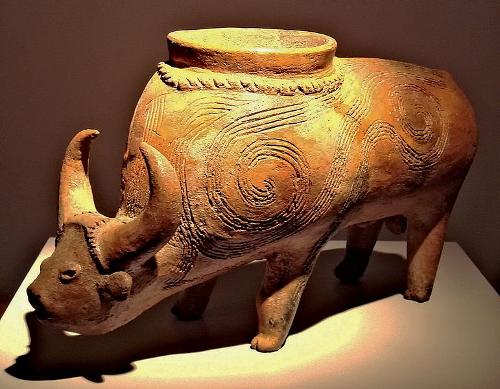 Water Buffalo, Lopburi, Thailand 2300 BCEPhoto: PHGCOM CC 4.0 International no changes made
Water Buffalo, Lopburi, Thailand 2300 BCEPhoto: PHGCOM CC 4.0 International no changes made
Despite lack of evidence, the Mekong River Valley and Khorat Plateau in Northeast Thailand and parts of Cambodia and Laos most likely were inhabited more than 10,000 years ago. Little is known about the oldest history of Thailand. At Mae Hong Song and at Kanchanaburi there are agricultural implements from around 3500 BC. The most striking archaeological artifacts have been found in the vicinity of Ban Chiang, pottery that is about 5000 years old. It is unknown from which people the pottery comes. The found ground plan of a village that should be more than 5000 years old, would have been one of the oldest civilizations in the world.
Middle Ages
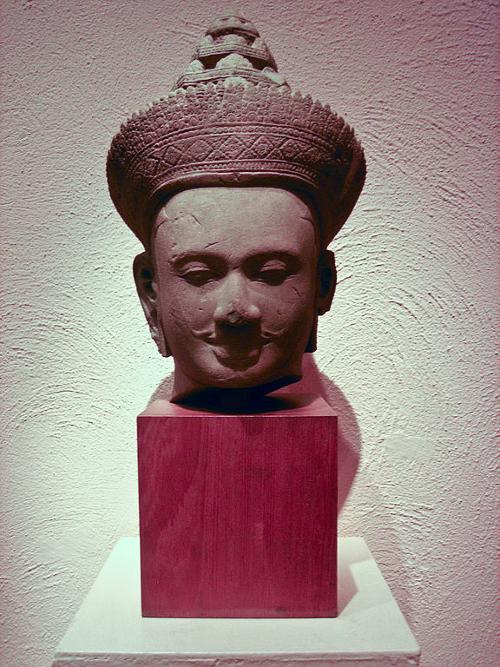 Sculpture of Vishnu Khmer period 10th century, ThailandPhoto: Public domain
Sculpture of Vishnu Khmer period 10th century, ThailandPhoto: Public domain
The oldest known inhabitants of the current Thai territory are the Mon. These people are believed to have come from Central Asia many centuries BC, descended via the major rivers to the south of Myanmar (formerly Burma) and then entered Thailand. The Mon were heavily influenced by Indian cultures. It is known that the Mon had fiefdoms called Dvavarati from the fifth to the seventh century. The capital then was Nakom Pathom, and this city was not far from Thailand's current capital, Bangkok. The Mon mixed with the Thai, who appeared in northern Thailand in the thirteenth century.
The Khmer from Cambodia ruled Thailand for nearly four centuries, the most famous being King Jayavarman II (790-850). In 1001, Suryavarman from Malaysia came to power, and many beautiful buildings were built during this time.
A supposed Thai kingdom from 568 fell several centuries later already in the hands of the Khmer. After the death of King Chieng Saen (also called Prohm) in 1177, the area was occupied by the Khmer, who by then no longer had that much power in this area.
The Thai
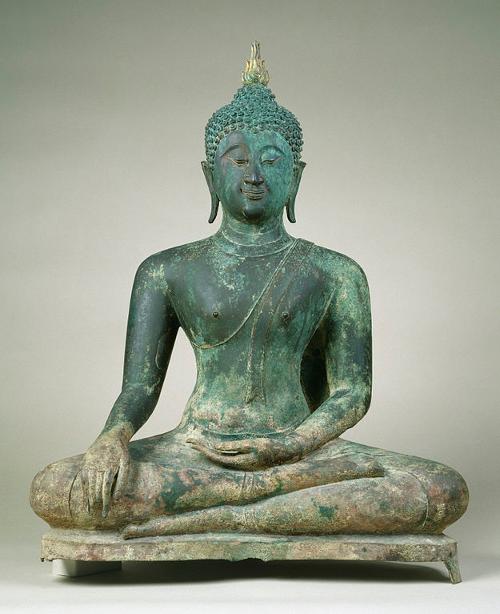 Seated Buddha, Thailand 14th centuryPhoto: Public domain
Seated Buddha, Thailand 14th centuryPhoto: Public domain
The Thai entered Thailand in the thirteenth century, but perhaps much earlier, from the current Chinese province of Yunnan. They had founded the kingdom of Nanchao in Yunnan, but were expelled by the Chinese, moved south again and settled again in Thailand. The Thais split into three groups, and one of these went to the valley of the Maenam Chao Praya.
nother version of the story is that the Thai were fled by the expansion of the Mongol emperor Kublai. Khan. Two Thai princes broke free from Khmer rule in 1238 by raiding the Sukhotai garrison. Bang Tao was proclaimed king and named Sri Intratit. Khun Bang Tao was succeeded by his second son, who appointed his brother Ramkhamhaeng as deputy king over Jalieng. Ramkhamhaeng was a great strategist and he soon conquered large parts of Burma (now Myanmar), Laos and southern Thailand as far as Malaysia. In addition to being a good soldier, he was also very progressive in administrative terms. He introduced an administration and gave the country its own language. He also made sure that Theravada Buddhism from Ceylon was introduced.
From 1279, Kublai Khan ruled in China, and he intended to conquer Burma, but also did not want to offend Ramkhamhaeng. given his reputation as a warlord. He even wanted to make a covenant, but that mission failed due to bad luck. Ramkhamkaeng then launched a diplomatic offensive towards China which resulted in a very close relationship with China. And that was good for the Thai in their fight against the Khmer. At the same time, in the late thirteenth century, King Mengrai founded the kingdom of Lanna in the north, which bordered exactly on the area of Ramkhamkaeng. However, the two kings left each other alone. Mengrai fought many successful battles and thereby managed to expand his empire and unite warring principalities. In 1281 he conquered the Mon at Hariphunchai and in 1292 he moved the capital to Chiang Mai.
Ayuthaya
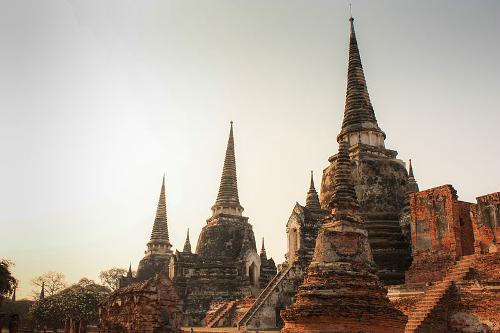 Wat Phra Si Sanphet, Ayutthaya, ThailandPhoto: Disapong Deeprom CC 3.0 Unported no changes made
Wat Phra Si Sanphet, Ayutthaya, ThailandPhoto: Disapong Deeprom CC 3.0 Unported no changes made
After Ramkhamkaeng's death in 1300, the Sukhotai Empire fell into decline. King Ramatibodi (proper name was U Thong) made Ayuthaya the capital in the first half of the 14th century and appointed his son governor of the Lopburi Empire bordering the Sukhotai kingdom. Ramatibodi ruled from 1350 to 1369 and was a totally different ruler than Ramkhamkaeng, who for the common man was very accessible. Ramatibodi was unapproachable and introduced slavery among prisoners of war, which would last into the 20th century. The first two hundred years of the kingdom of Ayuthaya were very important. During this period, a society was created that 'weighed down' and went under pretty strict rules and customs. The Thai also constantly attacked the Khmer and in 1393 they entered Cambodia under the leadership of King Ramesuan. The Cambodian army was defeated and the Khmer was dealt once and for all.
On the other side of the Ayuthaya Empire, there were constant problems with the Burmans; Sokhutai was conquered in 1378 by the Burmese King Boromaraja. This king also tried to conquer the kingdom of Lanna, but failed. In the sixteenth century, the Burmans attacked again and now conquered the principality of Chiang Mai, where a Thai prince was appointed as ruler. Ayuthaya became a Burmese province and the whole area was under the rule of King Maha Tammarajatiat from 1569. A son of his, Prince Naresuan, was committed to freeing the Thai from the Burmans. He managed to gather an army for this purpose and defeated the Burmese crown prince at the battle of Nong Sa Rai, restoring Ayuthaya's power. His brother Ekatotsarot became king in 1605 and under his rule the Dutch were allowed to settle in Ayuthaya.
The Europeans report
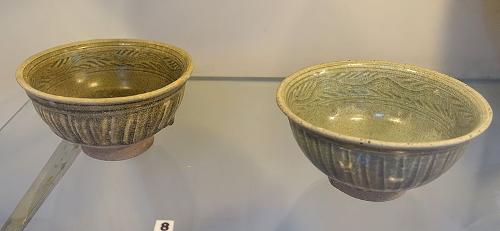 Bowls, Thailand 16th centuryPhoto: Daderot in the public domain
Bowls, Thailand 16th centuryPhoto: Daderot in the public domain
In 1511 the Portuguese arrived off the south coast of Thailand, at the port of Pattani. The Portuguese viceroy Albuquerque sent an envoy to the capital of Thailand that year from Goa in India. In 1608 the Dutch were given permission to settle in Pattani, and to establish a trading post there. The Dutch East India Company at that time had its headquarters at Java in Batavia. Here the transshipment of goods took place and from there they were transported on to Ayuthaya and Japan. A year later, the first Thai mission left for Europe, and was the first to visit Holland.
In the first half of the 17th century, more Europeans came to Thailand: the English in 1612, the Danes in 1621 and the French during the reign of King Narai (1657-1688). Relations between the French and the Thai were very good, but that changed after the death of Narai in 1688. The danger arose of complete French dominance, which was only prevented by the nationalist resistance. After Narai's death (1689), its leader, Phra Petraja, ascended the throne.
Meanwhile, Ayuthaya had already passed its peak and the stubborn Burmans continued to attack the kingdom. The Burmese king Mangra first conquered Chiang Mai and then advanced to Ayuthaya, where the capital fell into Burmese hands in April 1767 and was completely destroyed.
In November 1767, however, the Burmans were chased again from Ayuthaya by General Taksin, who had previously taken the cities of Chantaburi and Thonburi with a self-assembled army. He settled in the more defensible Thonburi where he was crowned king. Taksin managed to unite all apostate principalities and in 1776 the city of Chiang Mai even came into the possession of the king. Taksin turned out not to be a real leader. He neglected his administrative duties, became more and more harsh and gradually became insane. Taksin was murdered in 1782.
Chakri Dynasty: 1782 to the present
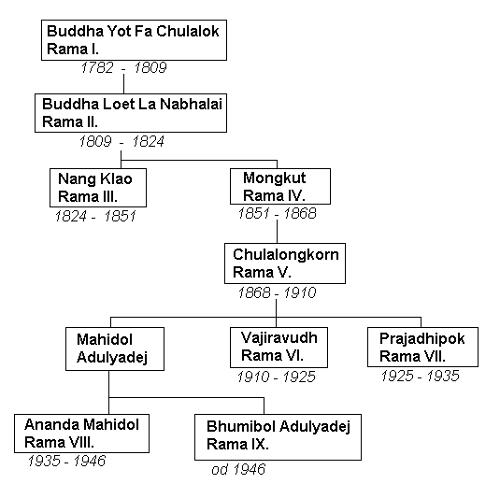 Chakri Dynasty, ThailandPhoto: Kolomaznik CC 3.0 Unported no changes made
Chakri Dynasty, ThailandPhoto: Kolomaznik CC 3.0 Unported no changes made
The new monarch became his proconsul in Khmer, Phya Chakri, who ascended the throne as Rama I and this dynasty still rules in Thailand (currently Bhumipol Adulyadey or Rama IX). In 1782, Rama I moved the capital across the river to Rattanakosin Island in present-day Bangkok, securing the city from the still aggressive Burmese. He then began to restore the grandeur of Thai art and architecture, and his successors also continued to rebuild Thai civilization.
The nineteenth century was to become very important to Thailand's development. The Europeans and Americans at that time had a great influence in Asia and the progressive kings Mongkut (Rama IV) and Chulalongkorn (Rama V) realized that Thailand had to join the speed of the nations. Foreign powers were allowed to trade with Thailand and experts and advisers were brought in from Europe and America to further develop Thailand. During this time the emphasis was placed on education and infrastructure, but also the immigration of Chinese, who gradually became predominant in trade and craft, increased sharply.
The governments of Rama I (1782-1809) and Rama II (1809-1824) were also dominated by Thailand's attempts to dominate Khmer and Laos. Especially Vietnam was Thailand's opponent. In 1845, Khmer was placed under common Thai-Vietnamese suzerainty.
Period Chulalongkorn
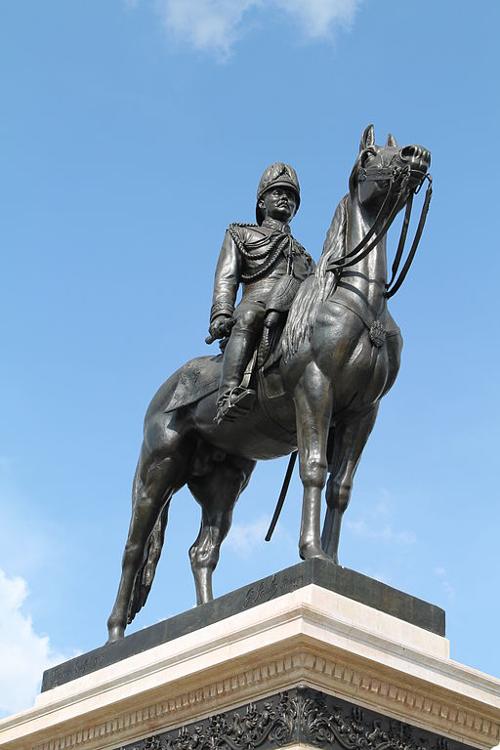 Equestrian Statue of King Chulalongkorn Rama V the Great of ThailandPhoto: Mirtage Strike CC 4.0 International no changes made
Equestrian Statue of King Chulalongkorn Rama V the Great of ThailandPhoto: Mirtage Strike CC 4.0 International no changes made
Mongkut (Rama IV), who died of malaria, was succeeded by his son Chulalongkorn (Rama V, 1868-1910), who would become Thailand's greatest ever king. He is also seen as the founder of the modern state of Thailand. He sent many of his children to the West to study there and he made many contacts with foreign rulers. Because of this, Thailand has probably never been dominated by foreign powers. Much was achieved in the 42 years that Chulalongkorn reigned: slavery was officially abolished in 1905; in 1897 the first railway line was opened, the city of Bangkok was expanded considerably and channels and irrigation works were constructed for rice cultivation. Thailand was bigger at the time than it was now; the northern part of Malaysia & euml; and part of Cambodia was also included.
Immigration of Chinese, who gradually became dominant in trade and craft, increased. In 1893, after a French naval demonstration, Thailand ceded its territory east of the Mekong to France. In 1904, France gained sovereignty over Luang Prabang, and in 1907 over the Cambodian provinces of Siem Reap and Battambang. In return, it effectively relinquished extraterritoriality, something England did in 1909, when it acquired suzerainty over four states in Northern Malacca.
The modernizations were continued under Vajiravudh (Rama VI) and Prajadhipok (Rama VII). During the reign of Vajiravudh, the first attempt to overthrow the absolute monarchy took place by the Thai army in 1912. After that, military coups would mark the 20th century political battlefield.
Period Prajadhipok
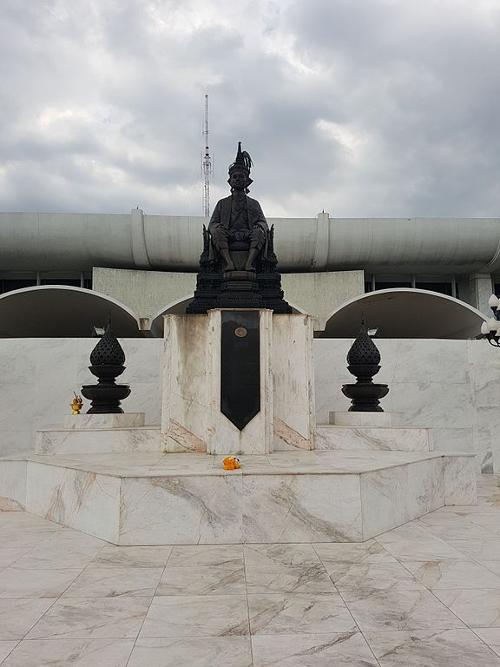 Statue of Prajahdhipok in front of Thailand's parliament buildingPhoto: Ludexvivorum in the public domain
Statue of Prajahdhipok in front of Thailand's parliament buildingPhoto: Ludexvivorum in the public domain
Under the rule of Prajadhipok (1925-1935), the global economic crisis of the 1930s broke out, which also affected Thailand. Senior officials, who had often studied abroad, were very dissatisfied with the state of affairs in Thailand, which led to a coup d'état in 1932. The coup, by a group of democratically-minded students with the help of the army, happened without bloodshed and on December 10, 1932, the king signed the first constitution and the absolute monarchy was replaced by a constitutional one. From that time on, the royal family was only assigned a ceremonial role in affairs of state. In 1933, a group of sympathizing royalists tried in vain to restore absolute monarchy by means of a coup d'état.
After this, the king went abroad and would remain there, and officially resigned in 1935. He had not appointed a successor, so a new king had to be constitutionally appointed. Ten-year-old Anada Mahidol, who lived in Switzerland, was appointed as the new King Rama VIII. Ananda did not return to Thailand until 1945, but was murdered a year later. Only in 1950 was a new king inaugurated: Bhumipol or Rama IX, the grandson of the famous king Chulalongkorn.
Siam becomes Thailand
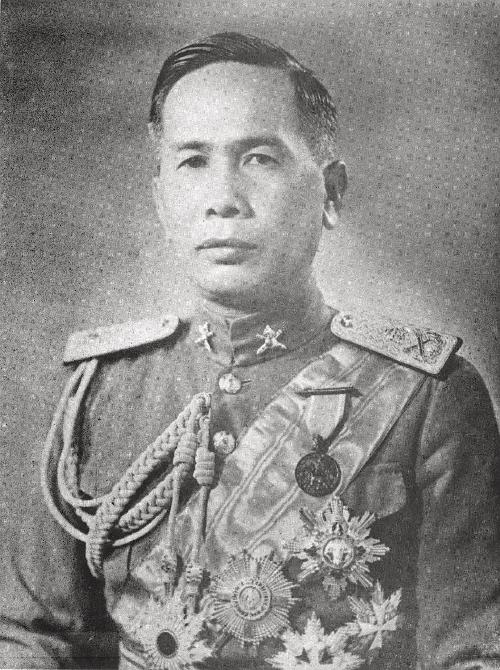 General Pibul, ThailandPhoto: Public domain
General Pibul, ThailandPhoto: Public domain
By 1938, Nationalist General Pibul (Phibun Songkhram) had become Prime Minister of the country and remained in power at some intervals until after World War II. It was he who changed the name Siam to Thailand in 1939 and gave the Japanese free passage during World War II. Japan was greatly admired by him and it was therefore not surprising that Thailand declared war on Great Britain in 1942. and the United States. In return, Thailand received from Japan back areas in Burma and Cambodia that it should have ceded to France and England. He also made efforts to "Thai" economic life, that is, to eliminate the Chinese.
In 1944, Pibul was ousted and succeeded by Seni Pramoj. Pridi Phanomyong became prime minister in 1946, but was ousted in 1947 after a coup d'état. He was succeeded by Pibul, who remained in power until 1948 and made progress, among other things, in the field of education, but on the other hand also canceled the constitution. He was a declared anti-communist, responding to US and French policies in Southeast Asia.
In the Korea conflict, Thai units were sent to battle. He had little success in his domestic politics. Pibul was unable to keep the army and police in check. In September 1957, the army under Sarit Thanarat Pibul pushed aside in a coup and, through a six-year plan, he made progress in many areas. The industry developed, foreign investors were attracted and compulsory education was increased from four to seven years. Universities and colleges were also set up throughout the country to relieve the capital Bangkok. The infrastructure was thoroughly addressed with the construction of dams, hydroelectric power station and road construction. In 1958 Sarit undertook 'a coup against himself'. He abolished the constitution and now acted as prime minister himself. However, he would not complete his plans because he died in December 1963. After his death, Marshal Thanom Kittikachorn became prime minister. In foreign policy, Thailand continued to support the United States on Vietnam, including through the provision of air bases and the participation of Thai troops in the operations in Vietnam. Developments in Vietnam, Laos and Cambodia prompted the Thai government to join ASEAN.
In 1968 Kittikachorn promulgated a new constitution, and in 1969 parliamentary democracy was introduced.
Seventies
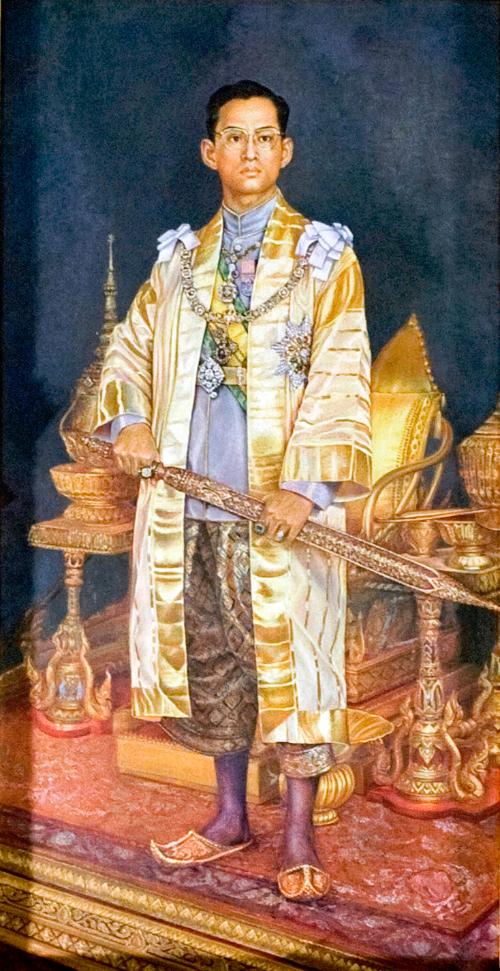 Portrait of King Bhumipol, ThailandPhoto: Government of Thailand CC 2.0 Generic no changes made
Portrait of King Bhumipol, ThailandPhoto: Government of Thailand CC 2.0 Generic no changes made
In November 1971, however, the constitution was abolished. Motives cited were terrorism in various provinces, actions by students and peasants and the questionable loyalty of the three million Chinese.
In October 1973, this led to violent riots and fights at Thammarat University. Dozens were killed and hundreds injured and several government buildings were set on fire. The leaders of the time, Generals Thanom Kittikachorn and Praphat Charusathien, fled abroad and the king appointed the rector of the university, Dharmasakdi, as prime minister. A national convention was established to allow 2,347 men and women to sit. In keeping with Thai tradition, the new government had ministers who had been in the expelled cabinet and they were not surprised that the fleeing leaders would return to Thailand after a while. Elections were called after Dharmasakdi's resignation, won by Sani Pramoj. However, he did not gain the confidence of the House of Representatives, after which his brother Kukrit Pramoj became the new head of government. The period in which Kukrit Pramoj was in power was characterized by more freedom and the attempt to improve the prosperity of the poorest. He also wanted, just like the students, to have the Americans out of the country after the Vietnam war, but the Americans were too important to the economy so that attempt failed. Relations with China and other neighboring countries also intensified during this period.
In 1976, riots broke out again and the army took power again with the conservative Thanin Kraivichien as prime minister. The communists were seen as guilty of the unrest and many were arrested. Prime Minister Kraivichien was deposed again in 1977 and succeeded by Kriangsak. Under Kriangsak, relations with China and Cambodia in particular were tightened even more, but foreign policy towards the west also became increasingly important. The relationship with Cambodia was damaged by the many refugees after the occupation of Cambodia by Vietnam. Also in Myanmar (Burma), domestic problems caused many people to flee to neighboring Thailand.
Free elections were again held in 1979 and the new prime minister became Prem Tinsulamond, a commander in chief of the army. However, Prem also got into trouble and fled to the northeast, but was brought back
by King Bhumipol, who thereby showed that he had more than just a ceremonial function.
Eighties and Nineties
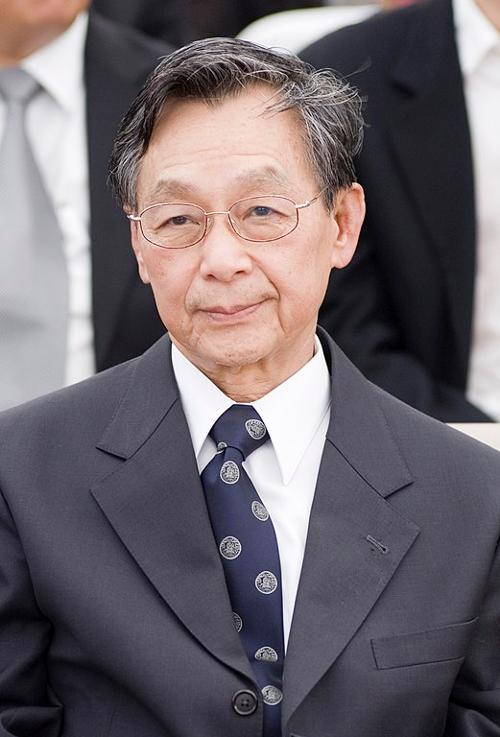 Chuan Leekpai, ThailandPhoto: Government of Thailand CC 2.0 Generic no changes made
Chuan Leekpai, ThailandPhoto: Government of Thailand CC 2.0 Generic no changes made
In 1988, parliamentary elections again followed in which 16 parties took part, resulting in Chatichai Choonchavan as prime minister. However, this government was accused of corruption and cared little about the military. This again led to a coup d'état on February 23, 1991, which, however, proceeded without violence. Chatichai was placed under house arrest by the military and a government of businessmen and technocrats was very quickly formed under the leadership of Anand Panyarachun, the National Peace-Keeping Council (NPKC). Just over a year later, another coup was staged and General Suchinda Krayapoon became the new prime minister.
Suchinda appointed diplomat businessman Anand Panyarachun as acting prime minister, but a year later he assumed the office himself and took office. as dictator. Once again the democratization process in Thailand was reversed. Large demonstrations led by opposition leader Chamlong Srimuang ended in May 1992 in violent riots in the capital Bangkok. After mediation by King Bhumibol, Suchinda was forced to resign and Anand Panyarachun was again appointed interim prime minister. In September 1992 he was succeeded by Chuan Leekpai.
In the 1980s, there were border incidents involving Laotian / Vietnamese troops. An armistice was agreed with Laos in 1988, which significantly improved relations. Thailand's endeavor to end the presence of Vietnamese troops in Cambodia, initially through (military) aid to the Cambodian resistance but later through diplomatic mediation, was finally rewarded with the Cambodia Peace Agreement of October. 1991. This approached the return of tens of thousands of Cambodian refugees to their homeland.
In the early parliamentary elections of July 1995, the Chart Thai Party (CTP) became the largest, just ahead of Prime Minister Chuan Leekpai's Democratic Party. CTP leader Banharm Silpa-archa formed a government coalition consisting of the former opposition, the PDP, and the Chavalit Yongchayud Party of New Aspirations (NAP) who left the government at the end of 1994.
However, Banharm was forced out in September 1996. stepping down after it was revealed that he had financed his election campaign with embezzled money, as the son of Chinese immigrants had improperly acquired Thai citizenship, had forged educational papers and his graduation thesis was based on plagiarism. Banharm called new elections for November, which were won by the NAP of Chavalit, just ahead of the Democratic Party and well ahead of the Chart Pattana, the third party and ally of the NAP. Chavalit formed a coalition government of the NAP and the Chart Pattana.
The Chavalit government (1996-1997) also had an unfortunate hand in trying to reorganize the overheated economy and gain the confidence of foreign investors. He failed to avoid a severe economic crisis in July 1997, but in addition to monetary and economic factors, the country's political instability played a role in Thailand's economic collapse.
A new constitution was finally adopted in September 1997. , which seeks to end a long tradition of political corruptibility. In November, Chavalit resigned and the election became a victory for his Party of New Aspiration (PNA), followed closely by the Democratic Party (DP). DP leader Chuan Leekpai re-formed a government with skilled economists in key positions such as finance and industry.
The government focused on financial reform and attracting foreign companies. At the end of 1998, the bills to offer foreign investors more guarantees and greater flexibility led to sharp political contradictions. The opposition and many others accused the government of "selling the nation." In general, however, the position of the government was not under threat. Despite the continuing crisis, Prime Minister Chuan remained by far the most popular politician. The opposition, led by ex-Prime Minister Chawalit Yongchaiyudh, could not for a moment give the impression that it was better able to cope with the problems.
The increasing influence of the press and public opinion brought a large number of light. Health and Agriculture ministers had to leave after accusations of wasting public money. Some MPs also lost their seats after it was shown that they had bought votes.
In 1999, the International Monetary Fund praised the Chuan Leekpai government's drive for reform and the economy picked up again.
21st century
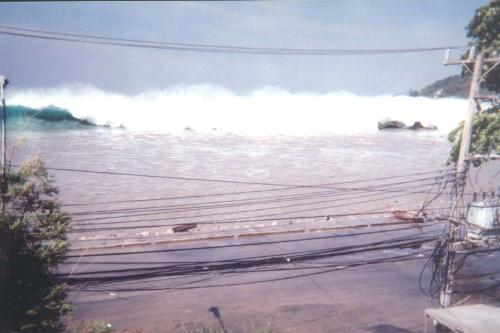 Tsunami 2004 ThailandPhoto: FlyAkwa CC 4.0 International no changes made
Tsunami 2004 ThailandPhoto: FlyAkwa CC 4.0 International no changes made
In 2001, elections were won by Thaksin Shinawatra's Democratic Party. Prime Minister Thaksin's nationalist party, Thai Rak Thai 'Thai love Thai' had a large majority in parliament through mergers with other parties.
Fighting between the Thai army and rebels in the Islamic south April 2004 killed at least 74 insurgents. One of them was wearing a T-shirt with an Arabic text and the letters JL. This may have been a reference to Jemaah Islamiah, a Muslim extremist group in Southeast Asia & euml; linked to al-Qaeda and suspected of bombings on Bali in 2002.
The government accused militant Muslims of a wave of violence that started as early as January 2004 . Sixty people had already died. There were fears of a return of Islamic separatism in southern Thailand, which could be supported by international networks. Prime Minister Thaksin said, however, that the insurgents were 'young people from the southern provinces'. were "not affiliated with international terrorists."
On Boxing Day in 2004, many countries in southern Asia; hit by a massive natural disaster, including Thailand. A seaquake that measured 9.0 on the Richter scale occurred. The epicenter of the quake was off the west coast of Summatra, off the Aceh province. The quake caused a wall of water to spill over the coast of Thailand. and many other countries flushed. The waves of this so-called tsunami reached a height of ten meters in some places. In total, more than 140,000 people were killed, including more than 5,200 in Thailand. Many foreign tourists were among those killed in Thailand. President Thaksin Shinawatra faced increasing criticism over the years 2005 and 2006, accused of abuse of power and corruption. On September 19, 2006, a coup was carried out by military and police.
In early October, former Thai army chief General Surayud Chulanont was appointed by King Bhumibol Adulyadej as the new Prime Minister of Thailand. At the same time, Bhumibol agreed to an interim constitution that came into effect immediately. The military junta of coup leader Sonthi Boonyarayglin was therefore given great powers until the 2007 parliamentary elections. government. The new Prime Minister Surayud Chulanont has repeatedly stated that he wishes to adhere to this timetable. However, concerns remain about the major role of the junta in this whole process, and about the long period, up to October 2007, that has been set aside for this. In addition, there appears to be disagreement within the armed forces over the actions of the government, which is echoed within the junta, and there are tensions between the junta and the government.
A series of bomb attacks in Bangkok on New Year's Eve and New Year's Eve of 2007 with three fatalities illustrates that the situation is still not very stable. No organization has assumed responsibility for these attacks. Martial law will probably remain in effect in Thailand for the time being. In December 2007 an important step will be taken towards the return of civil administration. In the elections, the People Power Party (PPP), which is seen as a continuation of Thaksin's party, wins the most votes. This process will be concluded in February 2008 when Samak Sundaravej becomes the new prime minister.
In September 2008, many people demonstrate against the prime minister. He is leaving the field because of appearances in a cooking show on television. He is succeeded by Somchai Wongsawat, but things remain restless. Somchai Wongsawat is also not here to stay and was already dismissed by the constitutional court in December 2008. Opposition leader Abhisit Vejjajiva becomes the new prime minister. In April 2009, supporters of former Prime Minister Thaksin Shinawatra protested and Prime Minister Abhisit Vejjajiva declared a state of emergency and sent troops to Bangkok to stifle the protests. From March to May 2010, tens of thousands of Thaksin supporters in red shirts protest and paralyze large parts of Bangkok. Government forces are cracking down, tourism is declining dramatically.
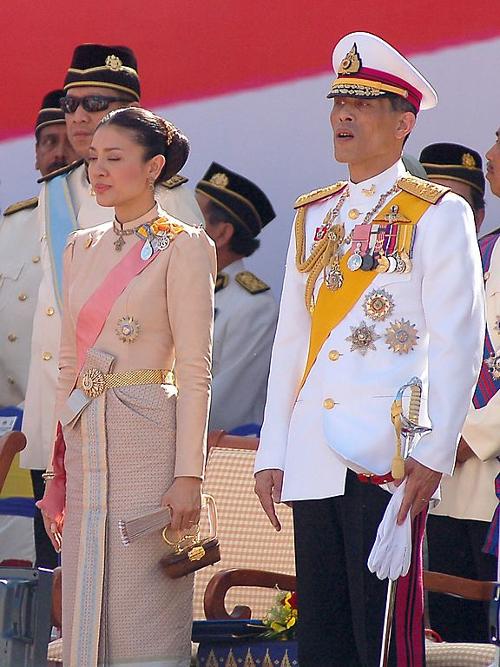 King Vajiralomgkorn (RamaX) of ThailandPhoto: Amrufm CC 2.0 Generic no changes made
King Vajiralomgkorn (RamaX) of ThailandPhoto: Amrufm CC 2.0 Generic no changes made
On August 5, 2011, Yingluck Shinawatra, youngest sister of former Prime Minister Thaksin Shinawatra, was elected Prime Minister of Thailand. In the years 2012 and 2013 things remain very restless with many protests that are sometimes severely crushed. In November 2013, the opposition demanded that Yingluck Shinawatra resign. She refuses and announces early elections in February 2014. These elections have indeed been held, but they have been boycotted or disrupted in a number of districts. There must be a new vote. The result is not known until all votes have been counted. Ultimately, the result of the election is declared invalid.
In May 2014, the army commits a coup and seizes power. In August 2014, coup leader Prayuth Chan-Ovha becomes prime minister. In August 2016, voters will vote in favor of a new constitution that will increase the influence of the military. In October 2016, King Bhumibol, the longest-serving monarch in the world, dies and a year of national mourning is declared. In December, Crown Prince Vajiralomgkorn succeeds him and in April 2017, the king will sign a new constitution to allow a return to democracy. Elections in March 2019 saw Prayuth Chan-Ovha confirmed in office with the support of the Palang Pracharath Party. The country experienced large-scale pro-democracy protests in 2020 and 2021.
In the May 2023 elections, Prayut Chan-o-cha's party suffered a heavy defeat. Immediately after this, he announced to quit as soon as a successor was elected. Prayut Chn-o-Cha's successor became Srettha Thavisin of the Pheu Thai, daughter of the party, the party of the Shinawatra family. This premiership lasted only about one year, however, in June 2024 Thavisin was sidelined by the Supreme Court for including in his government a convicted minster, Pichit Chuanban. After an interim period of several days by Phumtham Wechayachai, Paetongtarn Shinawatra, daughter of former prime minister and leader of the ruling Pheu Thai party, Thaksin Shinawatra, became the new prime minister. At 37, Paetongtarn is Thailand's youngest-ever premer and the second female prime minister. That was Yingluck Shina watra, an aunt of Paetongtarn Shinawatra.
Sources
Clutterbuck, M. / Thailand
Van Reemst
Davies, B. / Thailand
Kosmos-Z&K3
Forbes, A. / Thailand
Kosmos-Z&K
Hahn, W. / Thailand
Van Reemst
Hauser, S. / Thailand : mensen, politiek, economie, cultuur, milieu
Koninklijk Instituut voor de Tropen
Hoskin, J. / Thailand
Van Reemst
Macdonald, P. / Thailand
Kosmos-Z&K
Miethig, M. / Thailand
Lannoo
Peterse, L. / Thailand
Gottmer/Becht
Steinmetz, P. / Thailand
Elmar
Thailand
Uitgeversmaatschappij The Reader’s Digest
Thailand
Lannoo
CIA - World Factbook
BBC - Country Profiles
Copyright: Team The World of Info